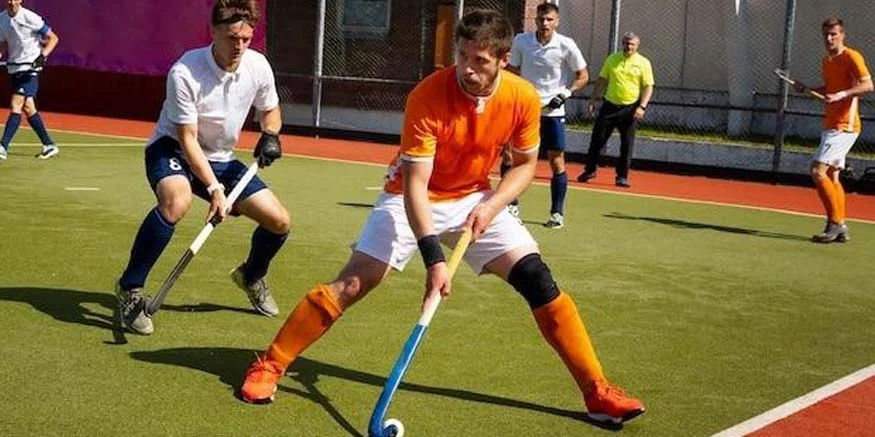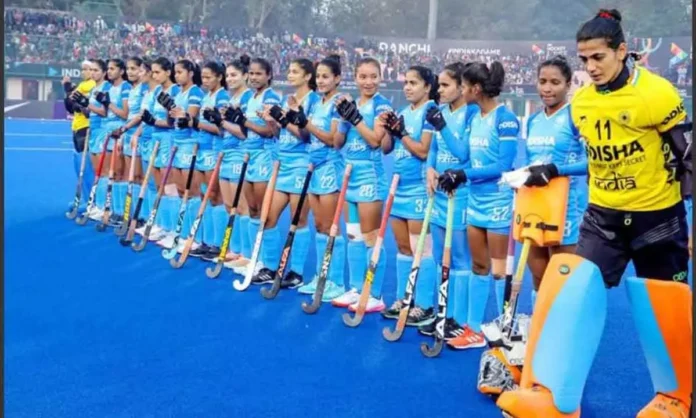Table of Contents
Hockey is one of the most dynamic and fastest sports, inspiring millions of fans around the world. But those who are new to the game or are curious about how it works may be wondering: “How many periods in hockey?” Unlike other popular sports such as soccer and basketball, hockey has a special game period format that sets it apart from the rest. In this article, we will look at how many periods there are in hockey, why the game is divided like this, and the rules for overtime and rest periods.
How Many Periods in Hockey?
Answer :- 3
To briefly answer your question, there are 3 periods in hockey. Each period is 20 minutes long, for a total of 60 minutes of regular play. These periodss are separated by breaks, which usually last around 15-20 minutes. The structure of the game is specifically designed to ensure players have both fast action and ample rest.
The three-period format is standard in most professional leagues, including the NHL (National Hockey League), international tournaments, and even college hockey. However, when answering the question, “How many periods are there in hockey?”, you also need to take into account the extra time that can extend a game beyond those three periods.
Why Is Hockey Divided into Three Periods?

Hockey has a unique game structure compared to sports like football, which has two halves, or basketball, which has four halves. Hockey’s three-period format is born out of the physical demands of the game. Each transition is fast and aggressive, requiring short bursts of speed, power and skill. The game becomes more intense and players need time to recover and strategize.
The three-period structure allows for two breaks. These breaks give players a chance to regroup, rest and re-emerge on the ice, ensuring better quality of play. The division also creates tension in the match as teams may look to shift momentum with new tactics in the upcoming period or bounce back from previous setbacks.
Breakdown of the Three Periods
First Period: The match starts with a 20-minute half. At this stage, both teams come into the match with energy and enthusiasm, wanting to set the tone for the rest of the match. This is often the time when teams assess each other’s strengths and weaknesses and begin to develop strategies.
Second period: After the first break, teams return for the second 20 minutes. This mid-game is often crucial, as teams can capitalize on any adjustments they made during the first break. An interesting move in the second/third period is switching sides, which forces players to adapt to new perspectives and angles on the ice.
Third Period: The final 20 minutes is often the most intense phase of the game. Meanwhile, the pressure is mounting as the countdown ticks down, with each team doing everything they can to maintain their lead or pull off a comeback. If the game is still tied after this period, it goes into overtime.
Overtime: What Happens When the Game is Tied?
The standard three periods are the foundation of hockey, but when regulation time ends with a tied score, the game heads into overtime. This is where the answer to “how many periods in hockey?” becomes more complex.
NHL Regular Season: During the regular season, games go into five minutes of sudden-death overtime, played with three players on each team. If no one scores within five minutes, a penalty shootout decides the winner.
NHL Playoffs: There’s a lot more at stake in playoff games. Instead of five minutes of overtime, teams play 20 minutes of sudden-death hockey until someone scores. There are no shootouts in playoff games, so games may include multiple overtimes.
International Hockey: Overtime rules may vary slightly in international competitions such as the Olympics or World Championships. For example, extra time may be longer and after one extra time the match may go straight to a penalty shootout.
Intermissions: A Necessary Break Between Periods
An important part of ice hockey’s structure are the breaks between game periods. After the first and second periods have finished, players go to the locker rooms for a rest and the ice is resurfaced to ensure optimal playing conditions. These breaks usually last for 15-20 minutes. It’s a time for fans to stretch, eat snacks, and enjoy entertainment on the ice.
What About Youth Hockey and Other Variations?
When asking “how many periods in hockey?” it’s also worth noting that while professional and collegiate games consist of three periods, there are variations in youth hockey. Younger players may play shorter periods, typically ranging from 12 to 15 minutes, depending on the league. However, the three-period format remains consistent across all levels of hockey.
Conclusion
To sum it up, the answer to “how many periods in hockey?” is three. These three periods of 20 minutes each make up the 60 minutes of regulation play, with intermissions providing necessary breaks for both players and the ice. If the game is tied at the end of regulation, overtime rules vary depending on the league or tournament. Whether you’re a new fan or an experienced viewer, understanding the structure of hockey will undoubtedly enhance your appreciation for this fast-paced and thrilling sport.
The next time someone asks, “how many periods in hockey?” you’ll not only know the answer but also have a deep understanding of how each period contributes to the excitement and flow of the game.
READ MORE :- Best Places to Travel in November 2024
How many periods are there in a standard hockey game?
A standard hockey game consists of three periods.
How long is each period in hockey?
Each period in hockey lasts 20 minutes of playtime.
Is there overtime in hockey?
Yes, if the game is tied at the end of the three periods, there may be an overtime period, typically lasting 5 minutes in regular-season games, or longer in playoffs.
Are there breaks between periods in hockey?
Yes, there are intermissions between each period, usually lasting 15-20 minutes.

